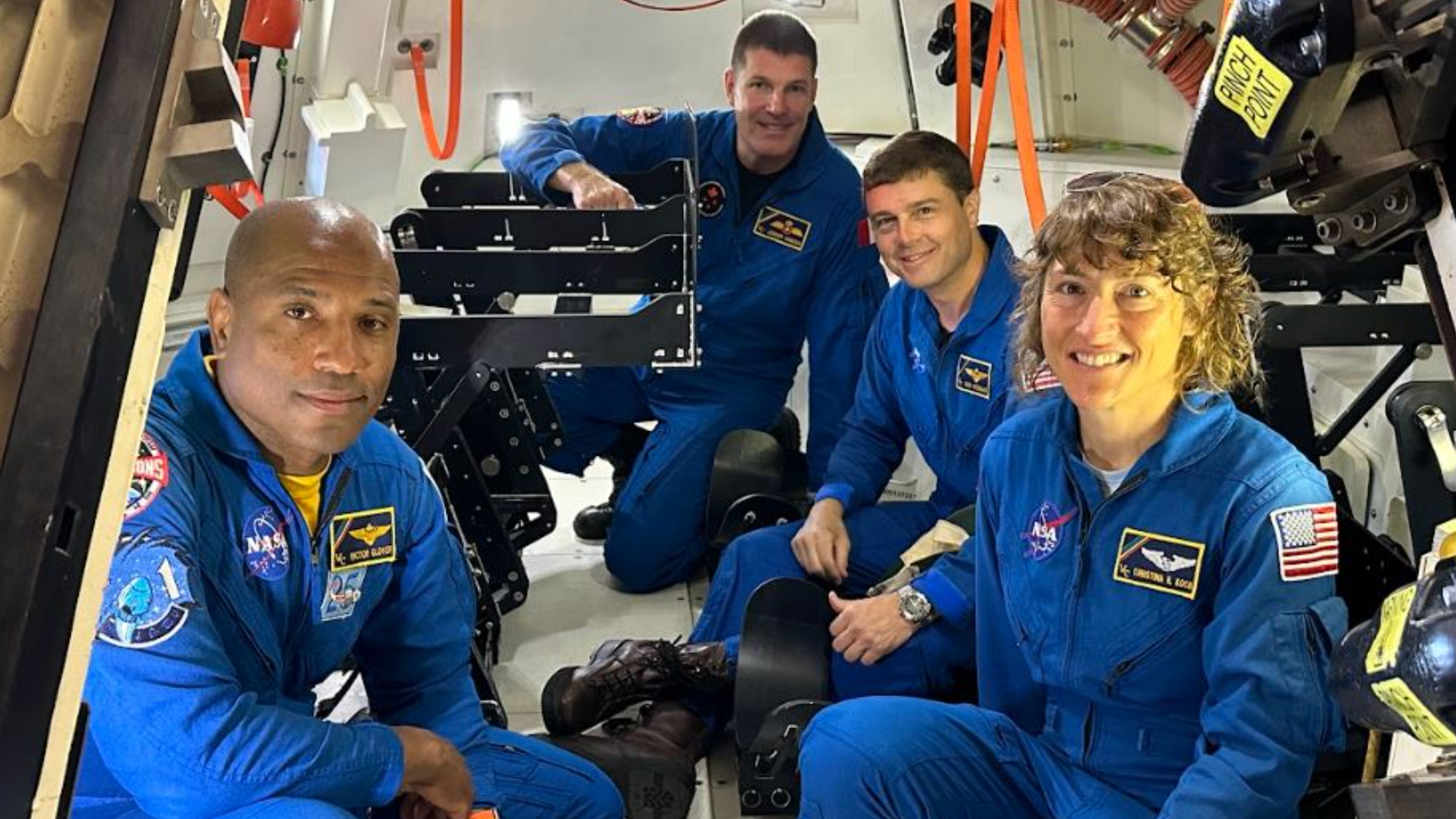Artemis 2 moon astronauts visit splashdown zone for their Orion spacecraft (photo)
To paraphrase Neil Young, they'll fly out of the black and into the blue.

The first lunar crew in half a century visited the spot where they'll splash down after their big mission.
The four Artemis 2 astronauts toured Naval Base San Diego on July 19 (one day before the 54th anniversary of the Apollo 11 moon landing) ahead of a recovery test conducted by military personnel in the Pacific Ocean, NASA officials said in a recent update.
Both NASA and the Department of Defense will use a replica of the moonbound Orion spacecraft, called the Vehicle Advanced Demonstrator for Emergency Recovery, to practice recovery procedures when the moon mission concludes.
A new photo also shows the moon crew sitting inside the replica: NASA commander Reid Wiseman, NASA pilot Victor Glover, NASA mission specialist Christina Koch and Canadian Space Agency astronaut Jeremy Hansen. The crew will do their own recovery tests next year ahead of the scheduled November 2024 mission.
Related: Four for the moon! NASA names Artemis 2 astronaut crew for 1st lunar mission since Apollo
NASA framed the visit as key to allowing the astronauts and ground personnel to learn how to work together for a safe splashdown after the Orion spacecraft flies around the moon and then parachutes into the Pacific Ocean.
"The crew met with recovery team members ... to learn more about the recovery process for their mission, which includes being extracted from the spacecraft after splashing down in the Pacific Ocean and being lifted via helicopter to the recovery ship where they will undergo routine medical checks before returning to shore," officials wrote.
Get the Space.com Newsletter
Breaking space news, the latest updates on rocket launches, skywatching events and more!
"The visit included a walkdown of the ground equipment and facilities the team uses to practice recovery procedures, along with a walkthrough of the recovery ship."
Artemis 2 is the second mission of the Artemis program, which aims to land humans on the moon no earlier than 2025 or 2026 if schedules hold. The first mission, Artemis 1, circled the moon in 2022 with mannequins on board.
The lunar landing mission of Artemis 3 is awaiting development of the SpaceX Starship system that will bring some of the crew to the surface. Starship has yet to achieve an orbital spaceflight and the Federal Aviation Administration is investigating what happened after the spacecraft spun out of control and was deliberately detonated (throwing out debris along the way) during a launch attempt in coastal Texas in April.
Future landing missions could include Starship or Blue Origin's Blue Moon lander, which was recently announced as the second option for bringing humans to the lunar surface. Blue Moon could be ready for Artemis 5 that will fly no earlier than 2029, Blue Origin officials pledged in May.
NASA and its partners under the Artemis Accords, which include 27 nations so far, plan to pursue lunar exploration under a peaceful framework through the 2020s and beyond. Hansen received his seat on Artemis 2 after Canada's contribution of Canadarm3, a robotic arm, for the NASA Gateway space station planned to be at the moon later this decade.
Join our Space Forums to keep talking space on the latest missions, night sky and more! And if you have a news tip, correction or comment, let us know at: community@space.com.

Elizabeth Howell (she/her), Ph.D., was a staff writer in the spaceflight channel between 2022 and 2024 specializing in Canadian space news. She was contributing writer for Space.com for 10 years from 2012 to 2024. Elizabeth's reporting includes multiple exclusives with the White House, leading world coverage about a lost-and-found space tomato on the International Space Station, witnessing five human spaceflight launches on two continents, flying parabolic, working inside a spacesuit, and participating in a simulated Mars mission. Her latest book, "Why Am I Taller?" (ECW Press, 2022) is co-written with astronaut Dave Williams.









